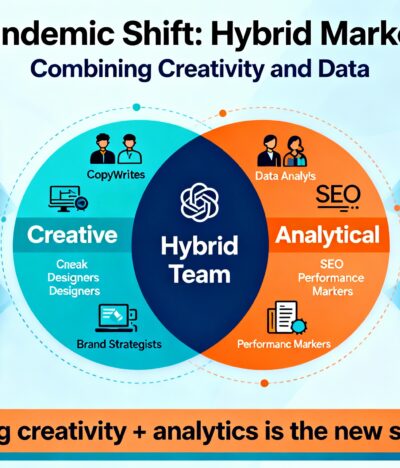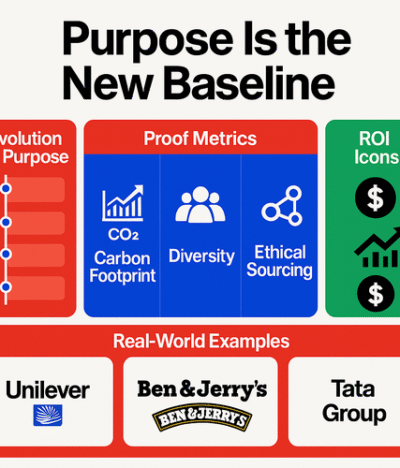The PR Revolution Is Here
In 2025, AI-augmented PR is transforming public relations beyond traditional press releases and media coverage — bringing precision, personalization, and predictive insight to the forefront.
Version 2 (Direct & SEO-strong):
In 2025, the rise of AI-augmented PR is reshaping public relations, shifting the industry from basic press releases to highly precise, personalized, and predictive communication.
What Is AI-Augmented PR?
AI-augmented PR refers to the integration of artificial intelligence tools and data-driven systems into traditional public relations processes.
Rather than replacing PR professionals, AI acts as a force multiplier — enhancing decision-making, streamlining workflows, and uncovering audience insights that would otherwise remain hidden.
Key Areas Where AI Enhances PR
- Media Monitoring: AI scans millions of online sources to detect mentions, trends, and competitor activity in real time.
- Sentiment Analysis: Natural Language Processing (NLP) helps decode public sentiment — distinguishing between positive buzz and potential PR crises.
- Content Optimization: Machine learning tools suggest tone, timing, and channel adjustments to improve campaign performance.
- Predictive Analytics: AI models forecast media reactions and audience engagement before campaigns launch.
By combining automation with human intuition, brands achieve faster, smarter, and more consistent public relations outcomes.
How AI-Augmented PR Is Transforming Brand Strategy in 2025
The year 2025 marks a turning point for communication teams worldwide. As PR becomes increasingly data-centric, AI ensures that brand messaging remains both agile and authentic.
1. Precision Storytelling
Gone are the days of one-size-fits-all press releases. With AI, brands can analyze behavioral data to craft hyper-targeted stories that resonate with each audience segment
For instance, AI tools can suggest headlines optimized for engagement or predict which journalists are most likely to cover a topic based on past interests.
2. Predictive Crisis Management
AI-augmented PR enables brands to detect potential crises before they go viral. By monitoring sentiment spikes or emerging negative narratives, PR teams can act swiftly — issuing clarifications, apologies, or counter-narratives in real time.
This proactive approach transforms reputation management from damage control to reputation prevention.
3. Smarter Media Relations
Machine learning systems now help PR professionals identify the best media contacts for specific stories.
AI-powered platforms like Propel or Meltwater analyze journalist behavior, past publications, and engagement rates to improve outreach accuracy — saving hours of manual research.
4. Automated Reporting and Insights
AI eliminates tedious report generation by automatically compiling coverage summaries, engagement analytics, and ROI metrics.
This allows PR professionals to spend less time tracking and more time strategizing — turning insights into impactful storytelling.
The Human Side of AI-Augmented PR
While AI revolutionizes data handling and optimization, the heart of PR remains deeply human.
Relationships, empathy, and brand voice can’t be automated — they can only be enhanced.
Where Humans Still Lead
- Creative Strategy: Only humans can interpret cultural nuances and emotional resonance.
- Crisis Sensitivity: Empathy-driven communication still requires the human touch.
- Ethical Judgment: Deciding when and how to act requires moral context beyond algorithms.
AI-augmented PR succeeds not by replacing human expertise, but by amplifying it — allowing communicators to focus on creativity and authenticity while machines handle complexity and speed.
Real-World Applications of AI-Augmented PR
Case Study: A Fashion Brand’s AI-Driven Launch
When a global fashion brand prepared to launch a sustainability campaign, it used AI to analyze past media coverage and consumer sentiment.
The insights revealed that audiences resonated more with “ethical luxury” than “eco-friendly fashion.”
By shifting its messaging accordingly, the brand secured 40% higher engagement and three times the press coverage compared to its previous campaigns.
Case Study: Crisis Management in Tech
A tech startup leveraged AI-augmented PR to monitor real-time chatter during a product recall. The system flagged early negative comments on niche forums, allowing the PR team to issue timely clarifications before the issue escalated.
This quick intervention not only mitigated backlash but also strengthened trust in the brand’s transparency.
Challenges and Ethical Considerations
As with any AI-powered discipline, AI-augmented PR comes with challenges: data privacy, bias, and over-reliance on automation.
PR professionals must ensure AI models are trained on diverse, reliable data and that human oversight remains central to every decision.
Ethical use of AI isn’t optional — it’s foundational to maintaining credibility in a world that values transparency above all.
The Future of PR: Partnership Over Replacement
Looking ahead, AI-augmented PR isn’t about replacing PR professionals — it’s about empowering them.
AI will continue to evolve as a strategic ally, offering predictive insights, data clarity, and automation while freeing communicators to focus on storytelling and strategy.
The future of public relations lies in symbiosis — where human creativity meets AI precision to craft messages that are not only heard but truly felt.
Conclusion: Smarter Stories, Stronger Brands
In 2025, brands that thrive will be those that embrace innovation without losing their humanity.
AI-augmented PR bridges that gap — helping marketers communicate with empathy, agility, and intelligence at scale.
As the lines between technology and creativity blur, one thing remains certain:
The most powerful stories will always be told by humans — but written with the help of AI.



